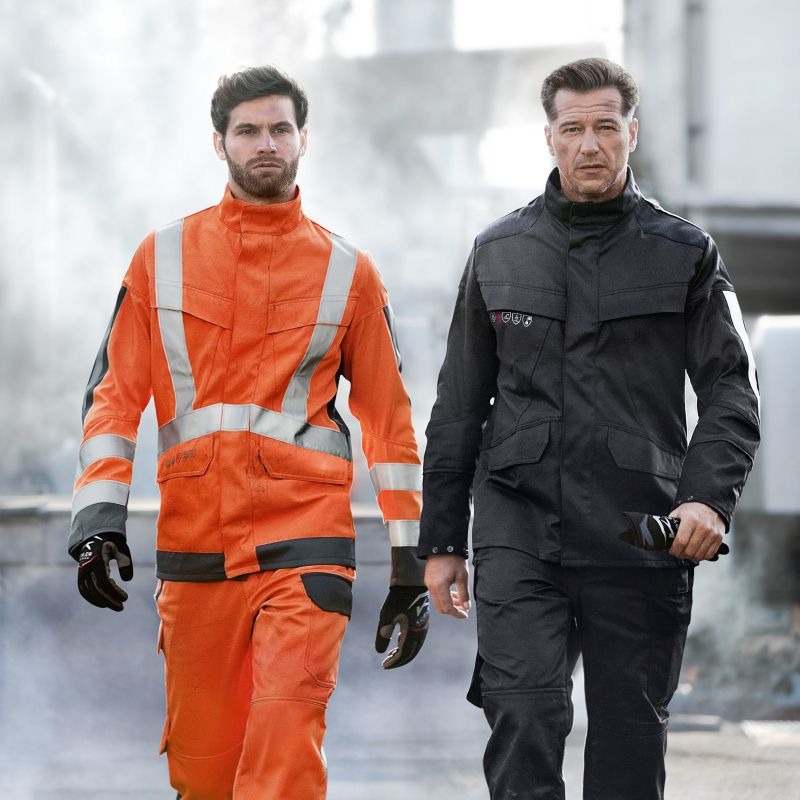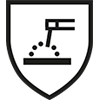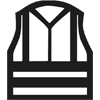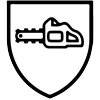
PERSONAL PROTECTIVE EQUIPMENT (PSA)
In extreme weather conditions, poor visibility or dangerous influences such as heat, flying sparks and high voltage, ordinary workwear quickly reaches its limits. Personal protective equipment (PPE) must be used in certain hazardous areas. At KÜBLER, it goes without saying that PPE is comfortable, convenient and well thought-out despite extreme areas of application.

NOT ALL PROTECTIVE CLOTHING IS THE SAME.
The first priority is the safety of the employees. Therefore, the first step is to define what protective clothing is needed for. According to the Occupational Health and Safety Act (ArbSchG §§3, 4), employers are legally obliged to prepare a risk analysis for each workplace. Based on this analysis, the safety officer prepares an overview of which workplaces require personal protective equipment and to what extent, and against which hazards this protective clothing must protect.
Then we come into play: According to the above defined specifications, which protective standard the clothing has to fulfil, we can recommend the right clothing.
OVERVIEW OF IMPORTANT PROTECTION STANDARDS:
WHAT IS A TYPE EXAMINATION CERTIFICATE?
A type examination certificate is the certification with detailed test reports for a certified product. This is also referred to as a certificate. The article designation, the material used and the protection standards are noted here. The validity of this certificate has been limited to 5 years since 2010.

THINGS TO KNOW ABOUT PSA.
Personal protective equipment is divided into 3 categories.
CATEGORY I
CATEGORY II
CATEGORY III
SUBSEQUENT FINISHING OF PROTECTIVE CLOTHING.
Special care must be taken when subsequently finishing protective clothing, e.g. with logos, emblems, embroidery or reflective stripes. The use of unsuitable materials can reduce or even eliminate the protective effect of the clothing. The type approval (certification of the PPE) of the clothing may be invalidated. It is therefore imperative that all modifications and accessories are tested for their effects on the protective functions before they are implemented or fitted.
FINISHING OF CATEGORY III PSA
In the case of category III PPE, this may only be carried out by the manufacturer, as any modification to the type must be reported to the testing institute that issued the type test. There, the modification is checked and deposited for the type examination certificate. The manufacturer can then issue a release for the modification or carry it out.
REFINEMENT OF CATEGORY II PSA
For category II PPE, the decision as to whether a modification may be carried out - taking strict account of the standard specifications with regard to the protective functions - can be made without the testing institute.
To avoid any risk, protective clothing should only be finished by the manufacturer. In case of doubt, design considerations must take a back seat to the protection and safety of the wearer of the garment.
WHAT IS A TYPE EXAMINATION CERTIFICATE?
A type examination certificate is the certification with detailed test reports for a certified product. This is also referred to as a certificate. The article designation, the material used and the protection standards are noted here. The validity of this certificate has been limited to 5 years since 2010.
THIS IS WHAT THE LINEN LABEL TELLS YOU.
There are special requirements for the linen label in PPE. It must not only state the distributor with address, the article number of the product and the composition of the material, but also other additional information regarding the protection standards:
THE STANDARDS MUST BE INDICATED WITH PICTOGRAM AND CLASSES.
- The indication "CE" indicates that it is a certified garment. The 4-digit number appended in the case of category III PPE is the number of the competent testing institute.
- An "i" indicates that the garment is accompanied by an information leaflet with important instructions.
- The size information is shown with a figurine.
SAFE WITH SAFETY.













